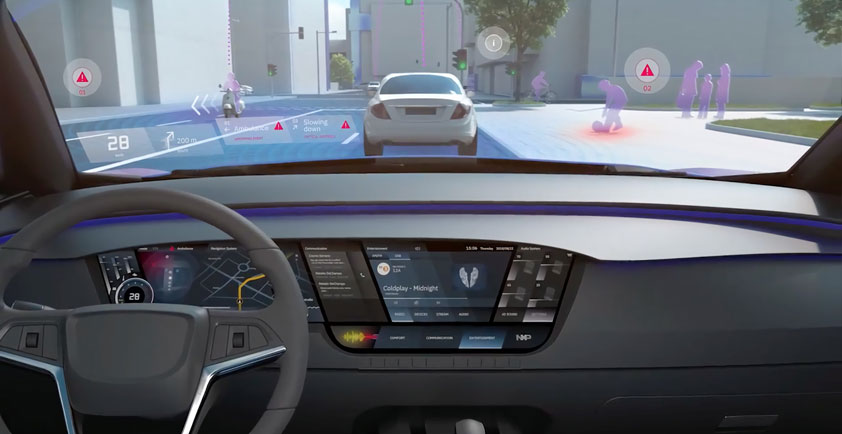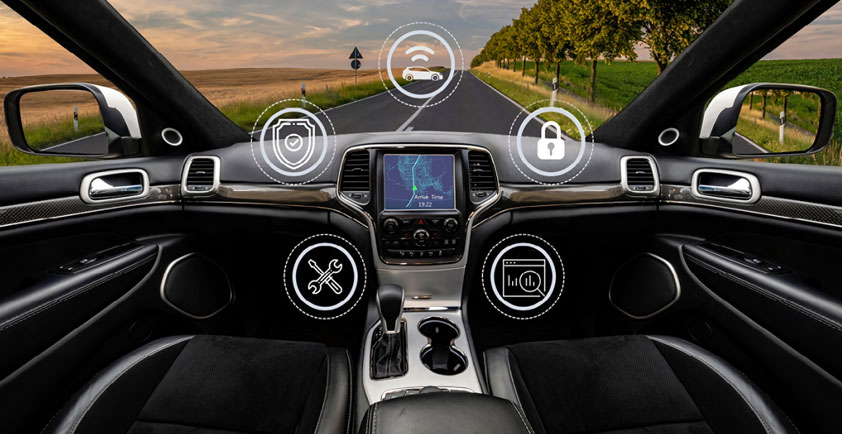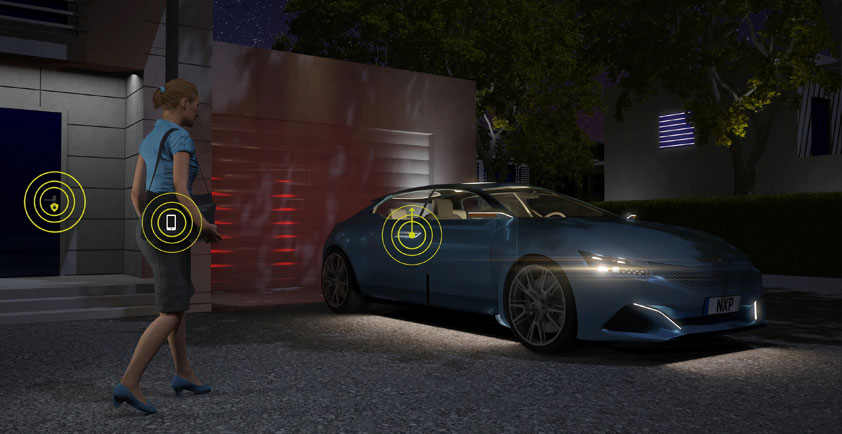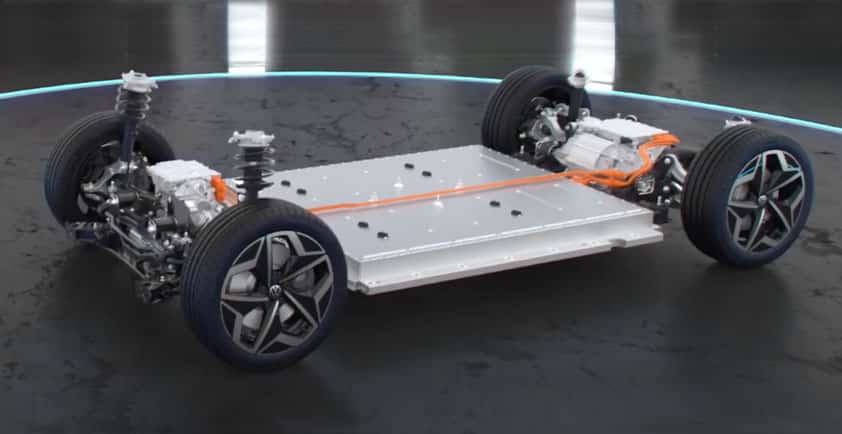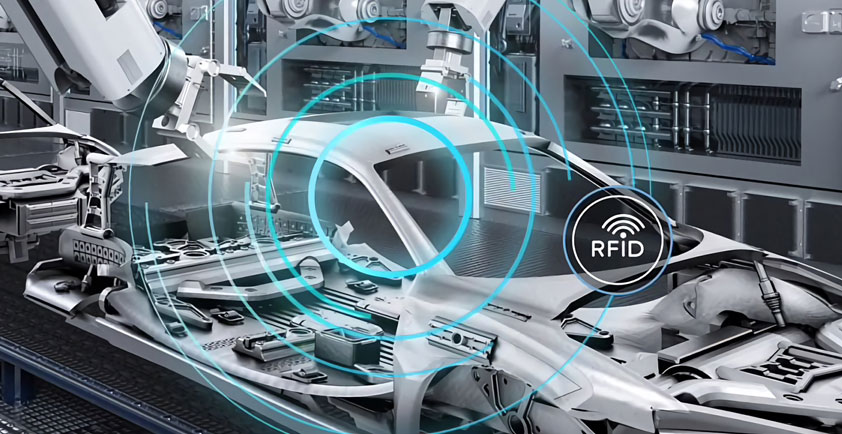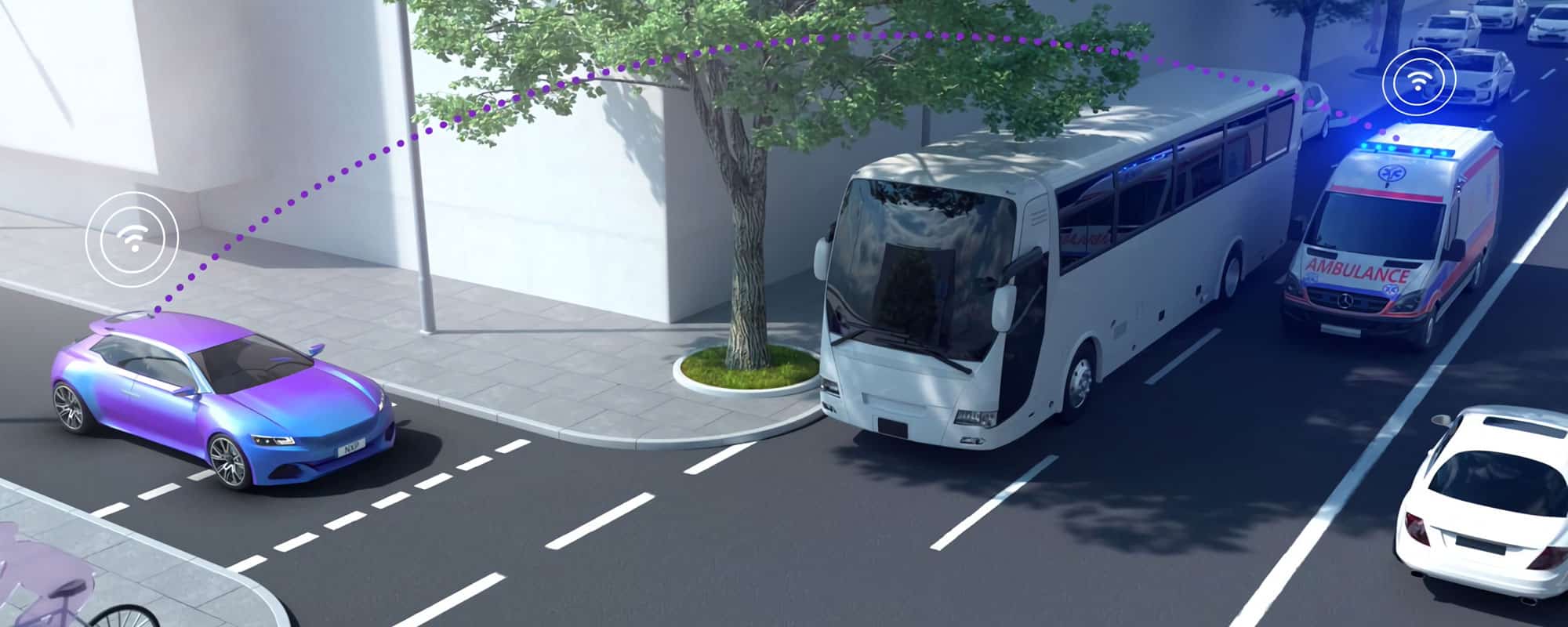
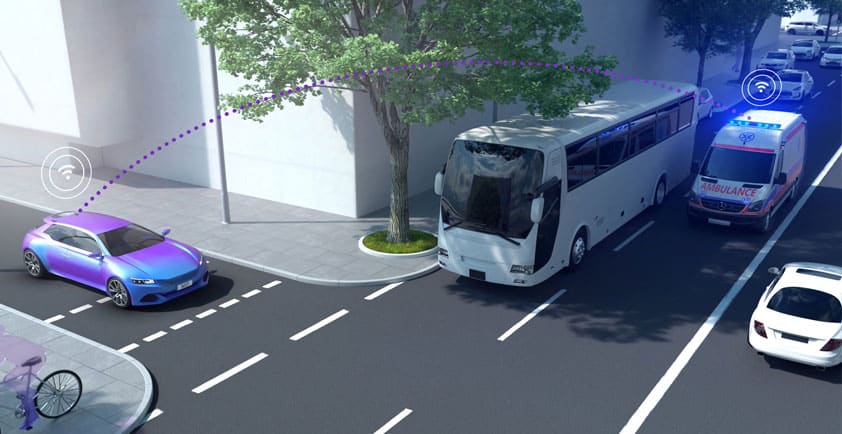
AUTOCRYPT ANNOUNCES OFFICIAL PARTNERSHIP WITH NXP FOR INTEGRATED V2X SECURITY SOLUTIONS
SEOUL, KOREA: AUTOCRYPT Co., Ltd., a leading V2X and autonomous vehicle security solutions provider, announced its partnership with NXP Semiconductors in several automotive security related applications beginning with secure V2X.
As an official partner of NXP, support for AutoCrypt V2X will be streamlined across NXP's V2X-related offerings, including the SAF5X00 modem chipsets and the SXF1800 Secure Element IC for V2X Communication, as well as the i.MX 8 Series Application Processor. By integrating AUTOCRYPT's IEEE 1609.2-compliant V2X security solution onto NXP's platform, secure exchange of V2X messages as well as performance optimization can be achieved more effectively.
Regarding the partnership, AUTOCRYPT CEO and co-Founder Daniel ES Kim stated, "As an increasing number of vehicles and infrastructure rely on connectivity, it is tantamount that processors have the highest ability to secure V2X communication. As a major player in the automotive market, NXP values security as much as AUTOCRYPT. We are looking forward to joint solution development to continue to progress in our target to keep connected cars secure."
AUTOCRYPT's offerings across V2X, V2D, and V2G security are a natural match for NXP's expansive automotive portfolio, paving the way for further joint solution development as global interoperability continues to become a crucial factor for enabling safe transportation and mobility.

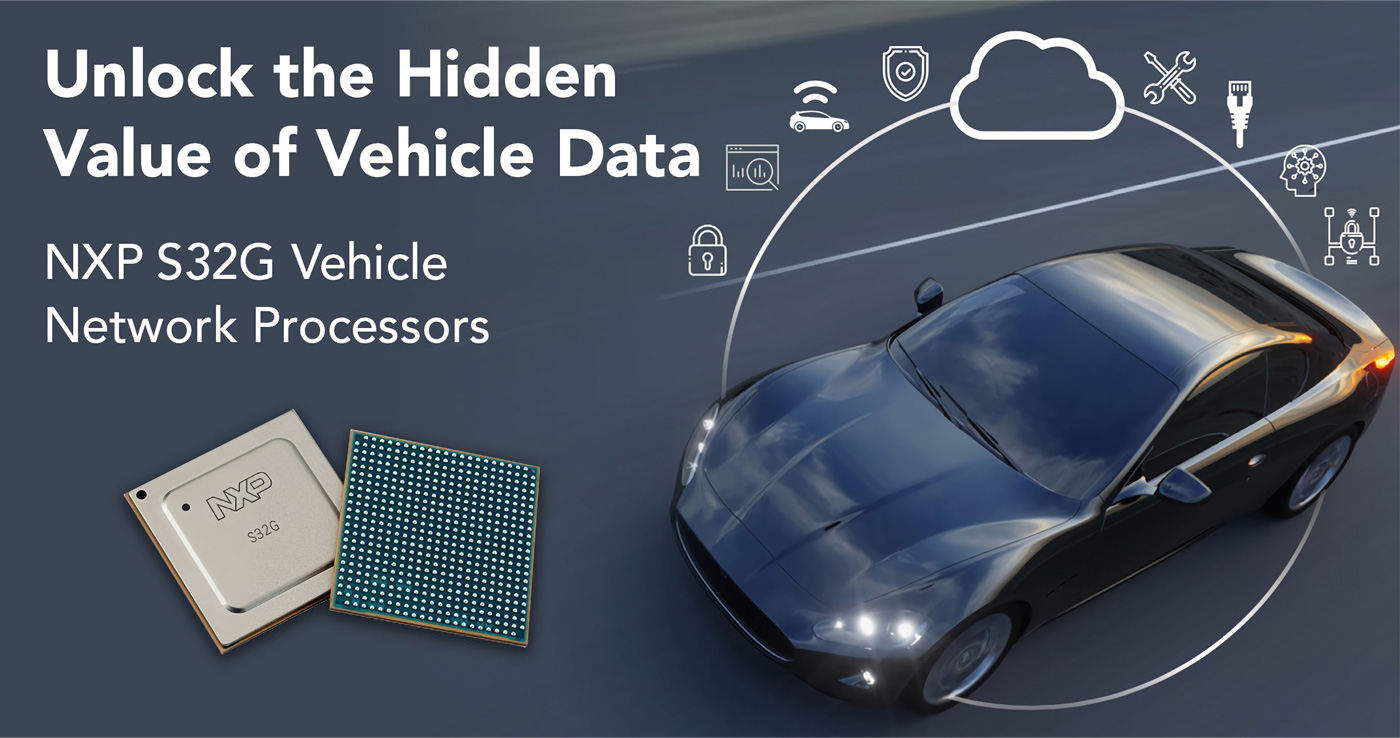
SYNOPSYS EXPANDS PORTFOLIO OF AUTOMOTIVE VDKS WITH SUPPORT FOR NXP S32G VEHICLE NETWORK PROCESSOR
>> Virtualizer Development Kit Deployed at NXP, Tier 1, OEMs, and Software Ecosystem Vendors 18 Months Before Silicon Availability
MOUNTAIN VIEW, Calif. -- Synopsys, Inc. today announced the general availability of its Virtualizer Development Kit (VDK) supporting NXP® Semiconductor's S32G Vehicle Network Processor. The VDK has been extensively used by NXP's teams to develop their S32G enablement software and firmware. VDKs, software development kits using a virtual prototype as the embedded target, enable Tier 1, OEM, and semiconductor companies to start software development, integration, and test months in advance of hardware availability to increase fault and coverage testing and accelerate testing cycles through a flexible and scalable deployment in regression.
With the S32G Vehicle Network Processor, NXP unlocks the full potential of vehicle data. It enables modern service-oriented gateways for rapid Over-the-Air (OTA) deployment of new capabilities and advanced edge-to-cloud analytics. It accelerates the shift to simplified domain and zonal-based vehicle architectures. With powerful processing, networking, and safety and security support, developers of automotive systems software face the challenges of increased integration complexity and testing requirements. They need to deploy more flexible and scalable solutions for software development and test by transitioning from a physical to a virtual environment. The Synopsys VDK for S32G has been used extensively by NXP and its ecosystem partners to develop the S32G software and firmware, advanced drivers, Linux, AUTOSAR, and automotive operating systems. Lead Tier 1 and OEM companies used the S32 virtual prototype to start software development 18 months before silicon availability.
"The availability of the Synopsys VDK for our S32G Vehicle Network processor has been critical to enabling earlier software development for our teams, our ecosystem, and our lead customers," said Ray Cornyn, vice president and general manager, Vehicle Network Processors at NXP Semiconductors. "Our collaboration with Synopsys enables access to an integrated virtual development solution, including Synopsys VDK and NXP software offerings that help automotive system developers leverage the advanced features of the S32G and accelerate their software development, integration, and test."
"With the combination of hardware security, ASIL D safety, high-performance real-time and application processing, and network acceleration for service-oriented gateways, domain controllers, and safety coprocessor, NXP is enabling a whole new range of automotive applications," said Tom De Schutter, vice president of engineering at Synopsys. "As a result of our close collaboration, the VDK for S32G is now available to Tier 1 and OEM companies worldwide, enabling them to transition from physical development, integration and test to a more powerful and scalable virtual environment."


VIRTUALIZED TELEMATICS SYSTEMS
>> Reduced hardware for safe and secure connectivity
Berlin, Toulouse/Linköping, Manchester, Eindhoven. OpenSynergy, NXP®, ACTIA and Mobica have completed a joint reference platform, demonstrating a hypervisor-based Telematics Control Unit (TCU). This demonstrates the consolidation of multiple telematics applications with different safety and security requirements on a single TCU. OpenSynergy‘s virtualization platform COQOS Hypervisor SDK runs on a telematics reference hardware from ACTIA, a manufacturer of electronics for embedded system management. The hardware is based on thei.MX 8QuadXPlus Applications Processor from NXP Semiconductors. The i.MX 8QuadXPlus SoC is part of NXP’s i.MX 8X applications processor family, ideal for safety-certifiable and efficient performance requirements. The platform hosts multiple virtual machines (VMs) running TCU applications, provided also by ACTIA. The software services company Mobica supported the integration work with its specialized know-how. The reference platform proves resilience on key characteristics of a hypervisor-based TCU, such as freedom from interference, safety, performance, stability, power management and early availability.
A Telematics Control Unit (TCU) is an embedded system connecting the vehicle’s external and internal world. Typical applications include services such as eCall crash notification, stolen vehicle tracking and wireless access point as well as vehicle data exchange for diagnostic purposes. In many cases, this necessitates state of the art security. Carmakers also use TCUs for vehicle-to-vehicle (V2V) or vehicle-to-infrastructure (V2I), collectively referred to as V2X. Such applications introduce tough requirements in terms of functional safety. TCUs are also expected to play a key role in autonomous driving.
The automotive industry increasingly looks toward the use of hypervisors. This includes TCU vendors. The hypervisor allows several system domains to run in different virtual machines (VMs) on a single processor while ensuring freedom of interference through rigorous partitioning. Apart from cost savings, this provides a sound basis for safety and security. It also simplifies reuse of existing software components, saving time, cost and mitigating risk. The different parts of the system can be managed independently, allowing optimizations in terms of system response time and power consumption.
NXP, OpenSynergy, ACTIA and Mobica collaborated and built upon many years of experience of telematics solutions in mass production.
This reference platform will run on an NXP i.MX 8X applications processor. This processor is based on the Arm Cortex-A53 core, which additionally provides secure domain partitioning. i.MX 8X offers unique hardware partitioning with mechanisms to enforce isolation. This capability significantly simplifies the hypervisor development. Advanced hardware virtualization enables rapid deployment of multiple full-chip, domain-protected operating systems.
Mobica has supported the development and integration work with its specialized engineering services and know-how.
Carmakers and suppliers benefit from this reference platform, because it makes it much easier to bring a new telematics product in short time to the market. They can immediately focus on development and integration of actual services.
